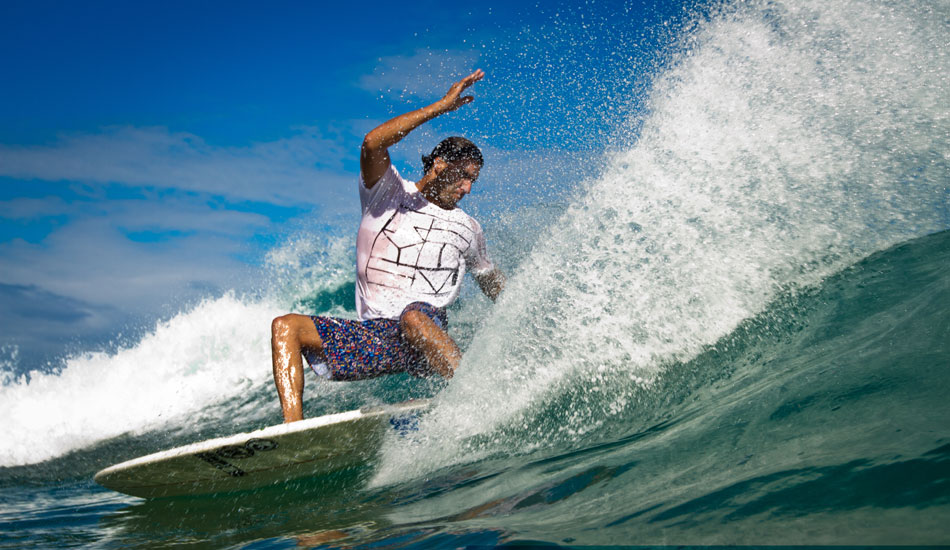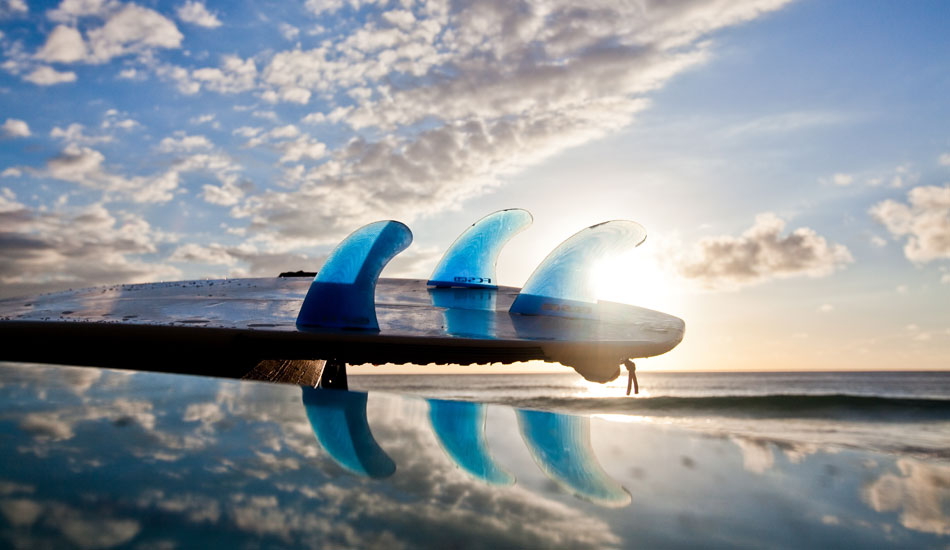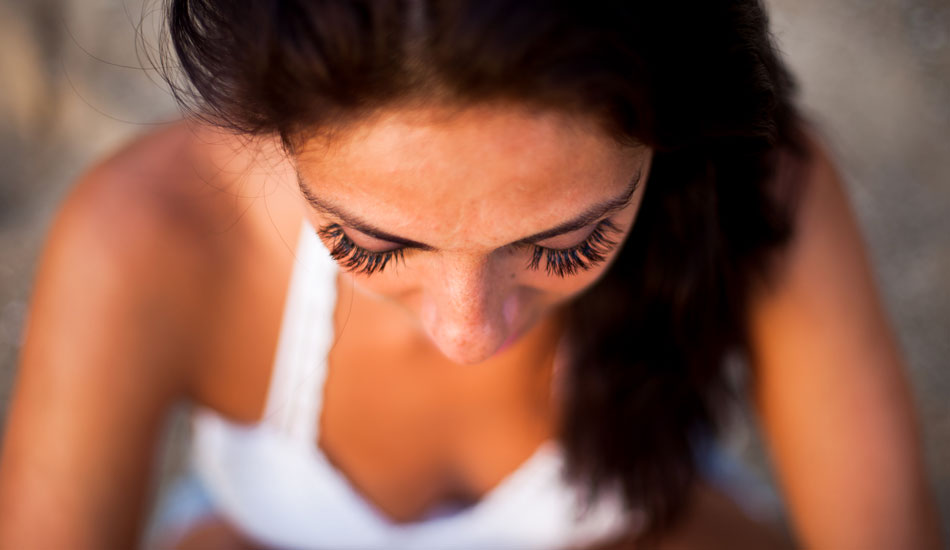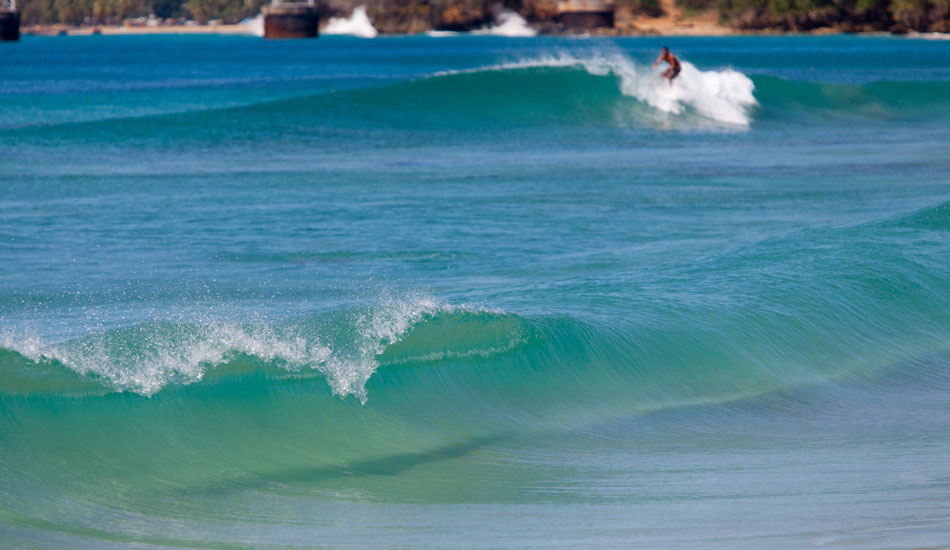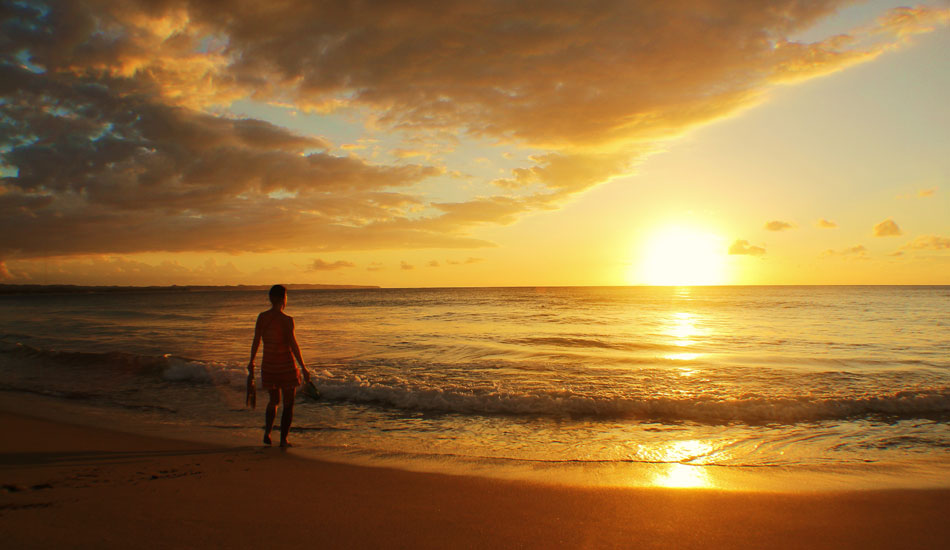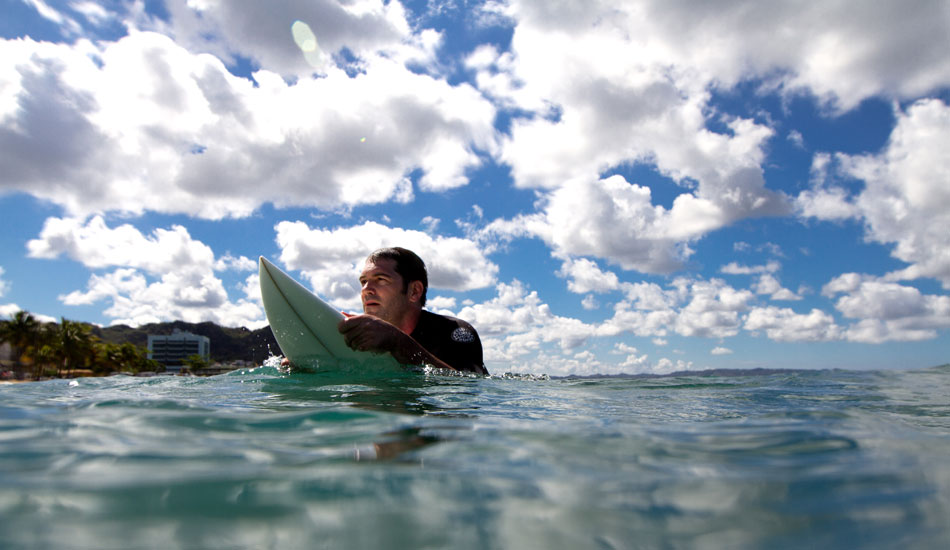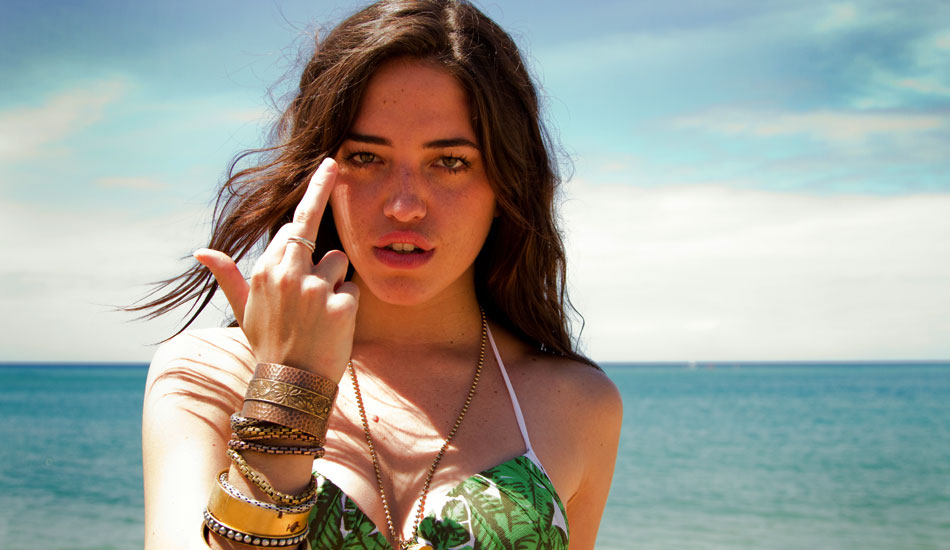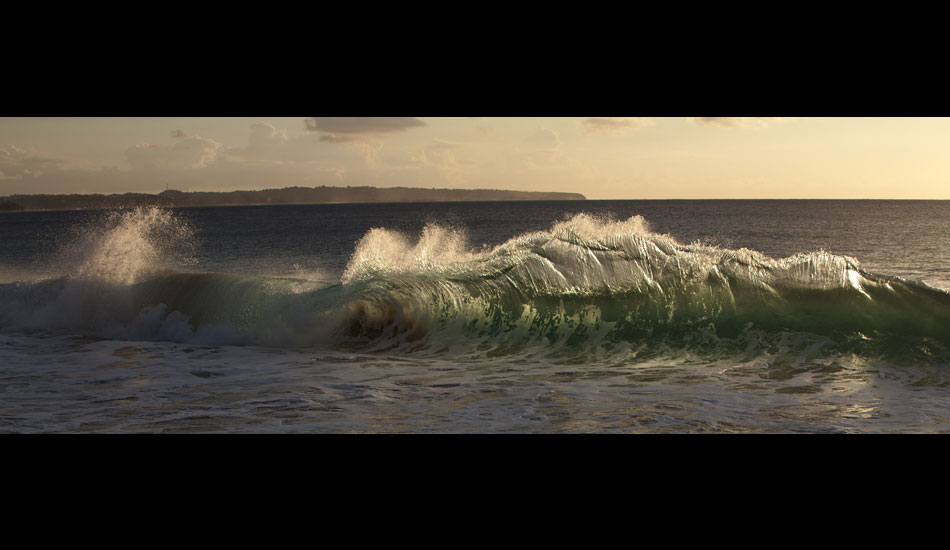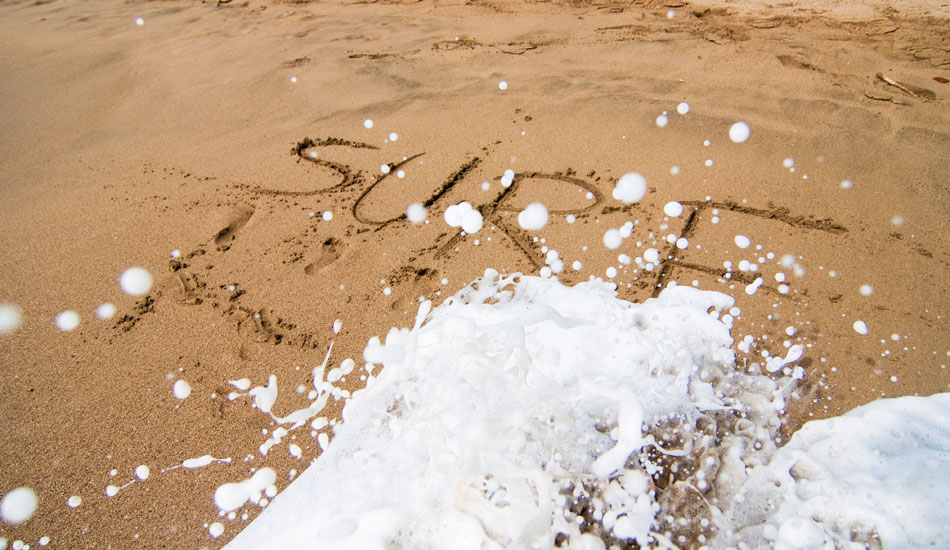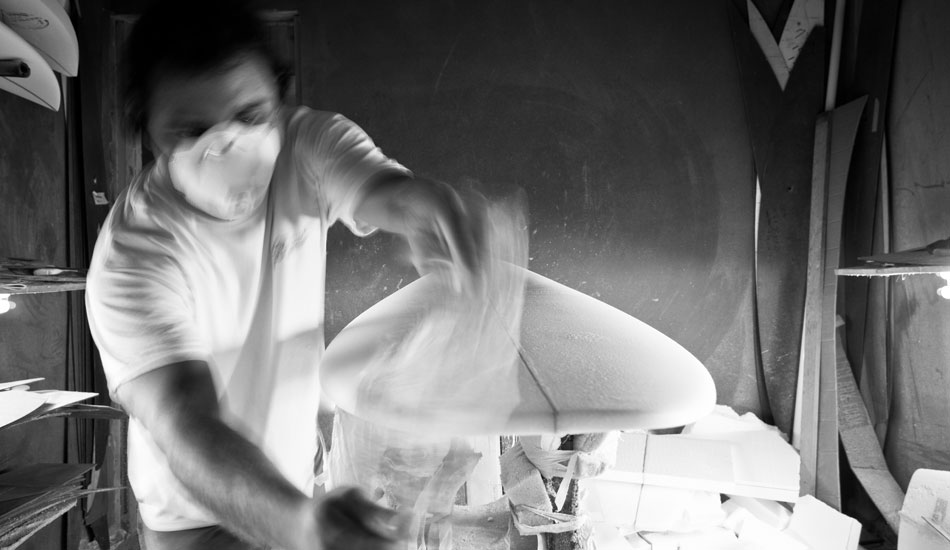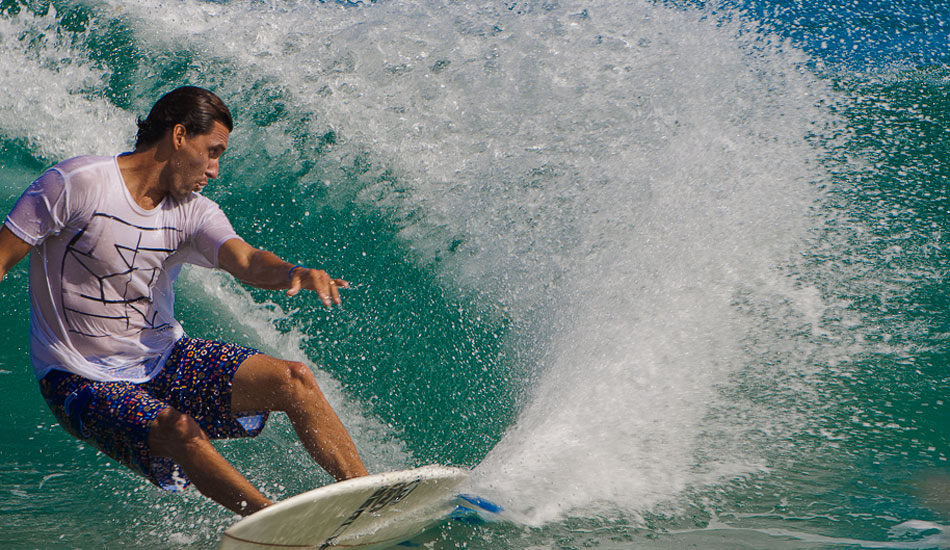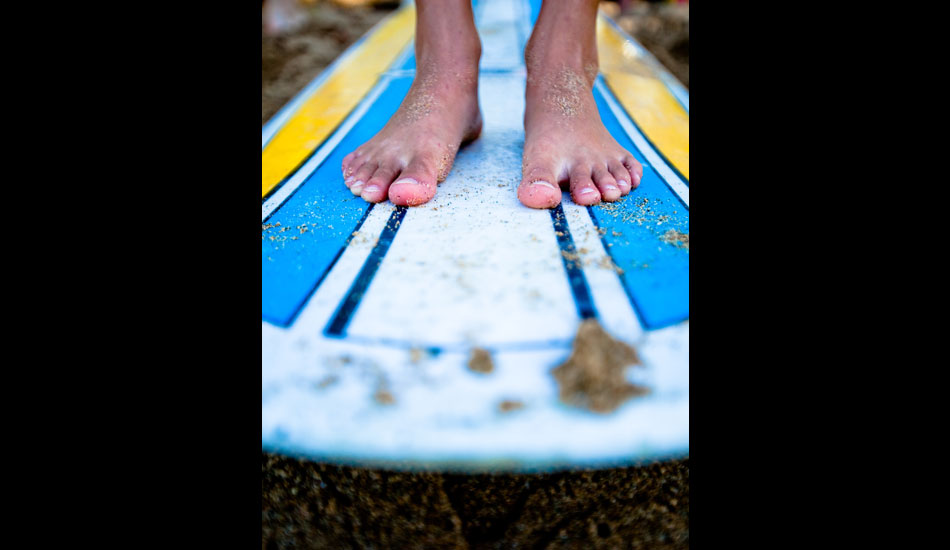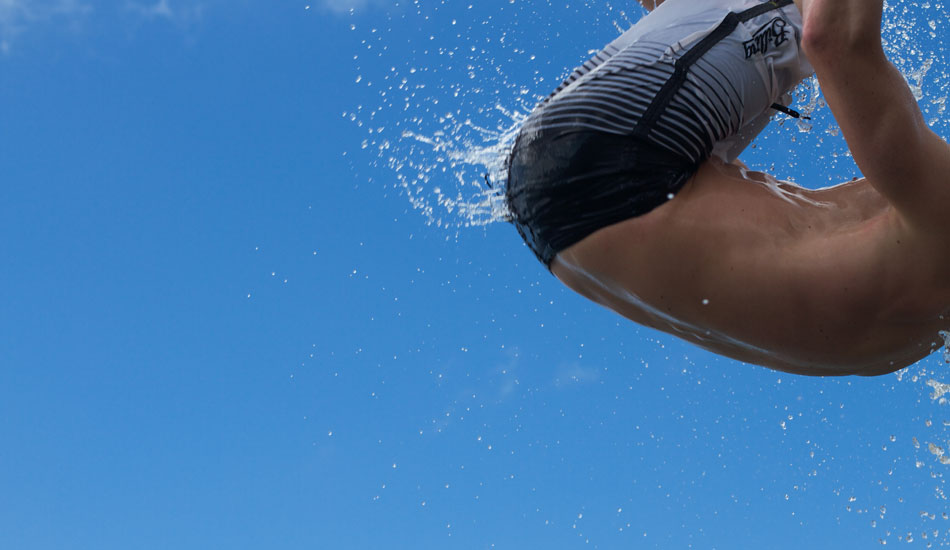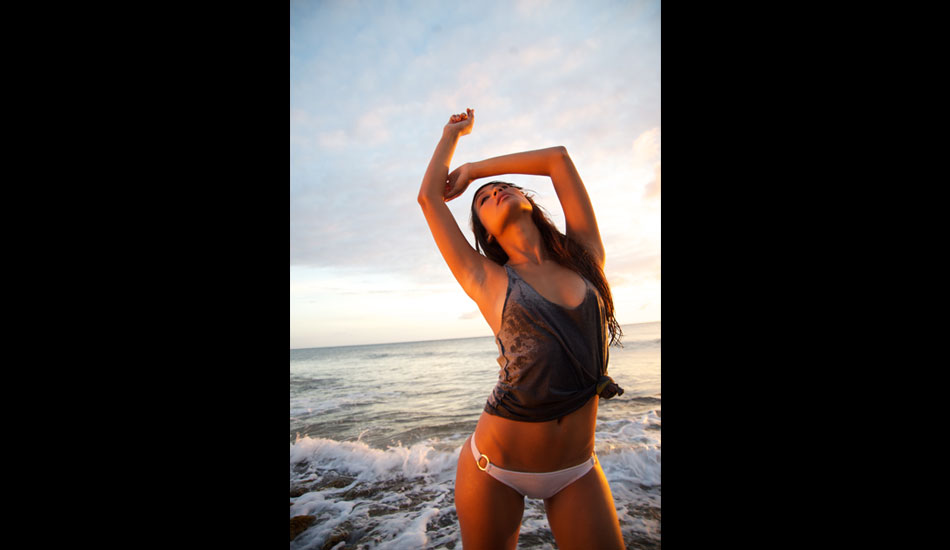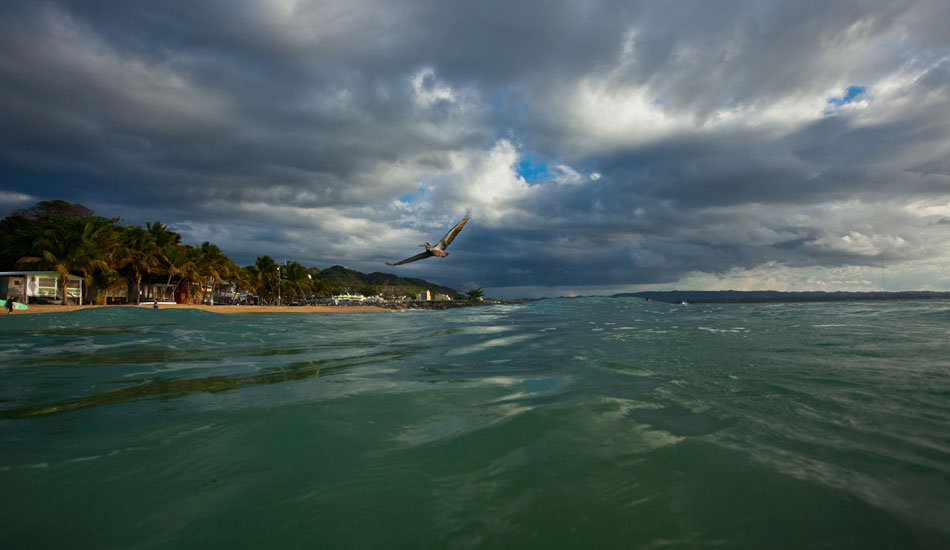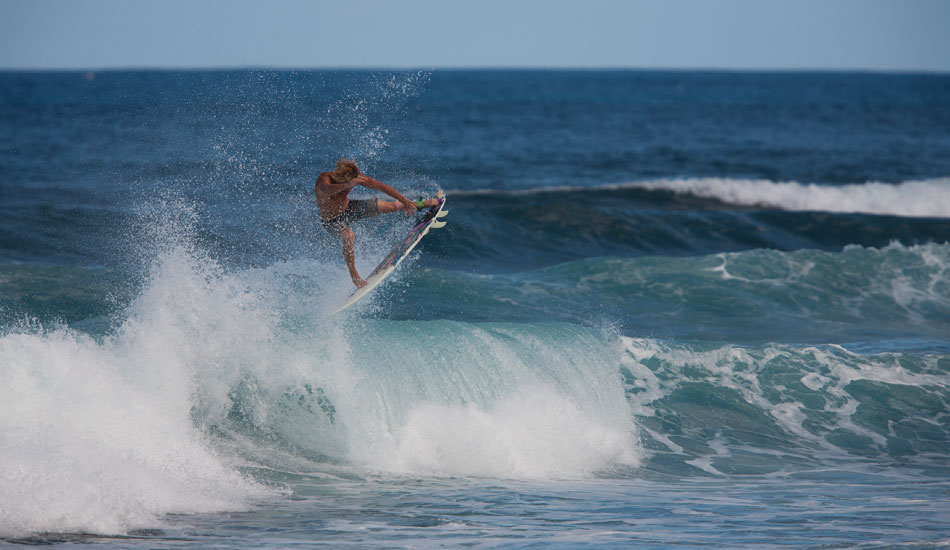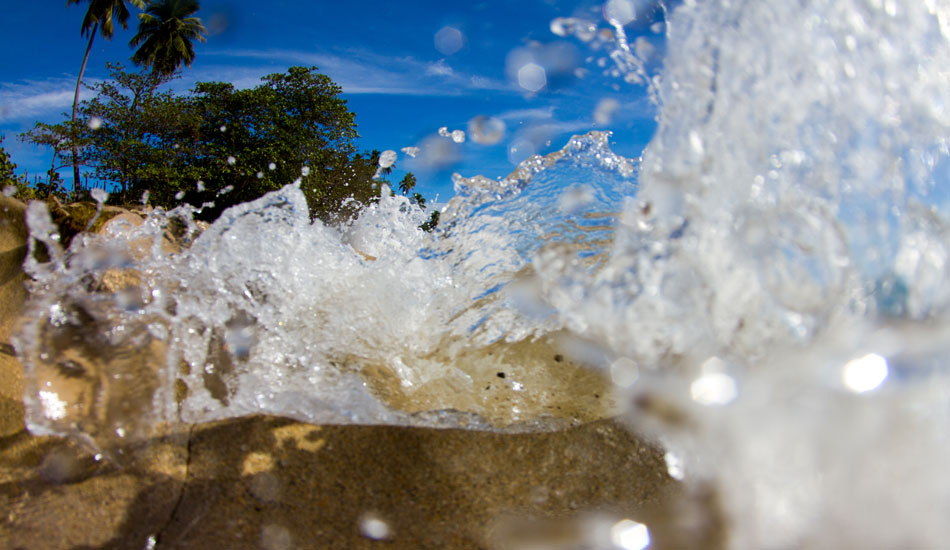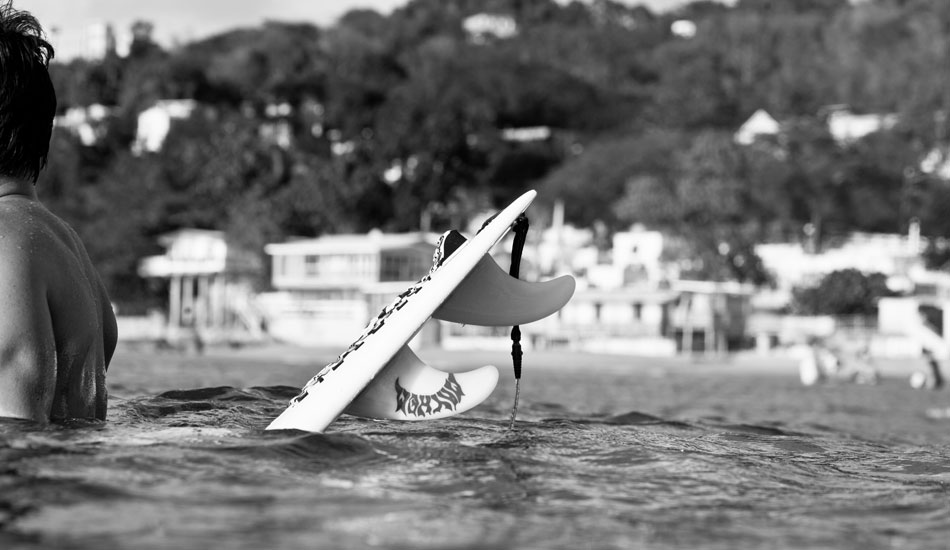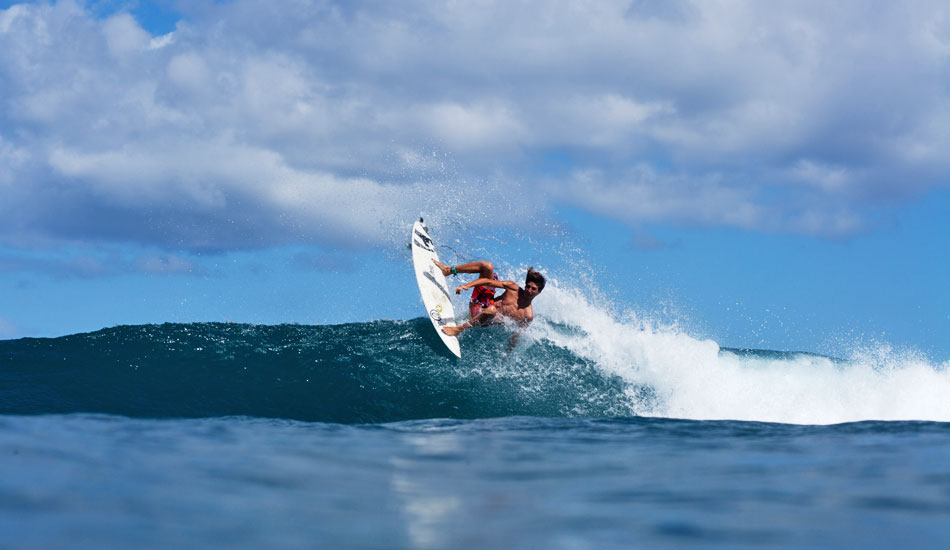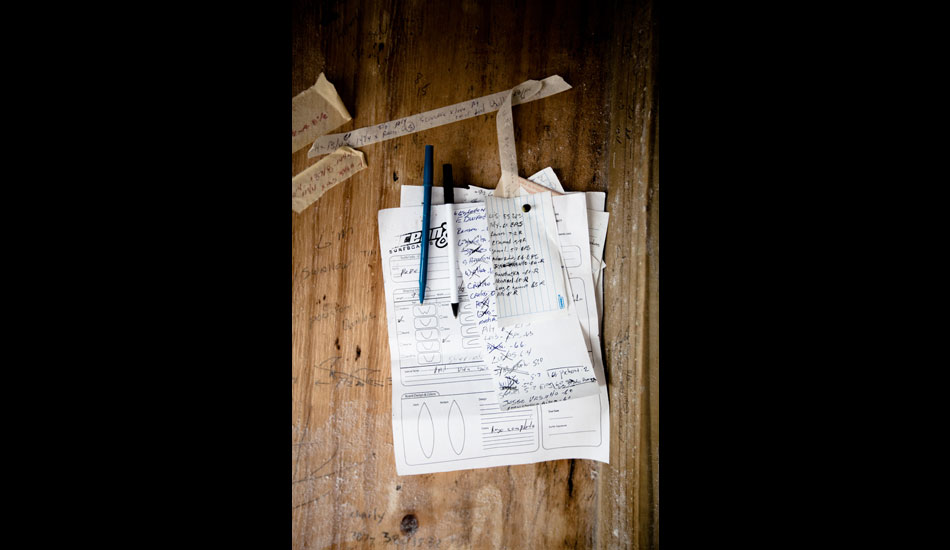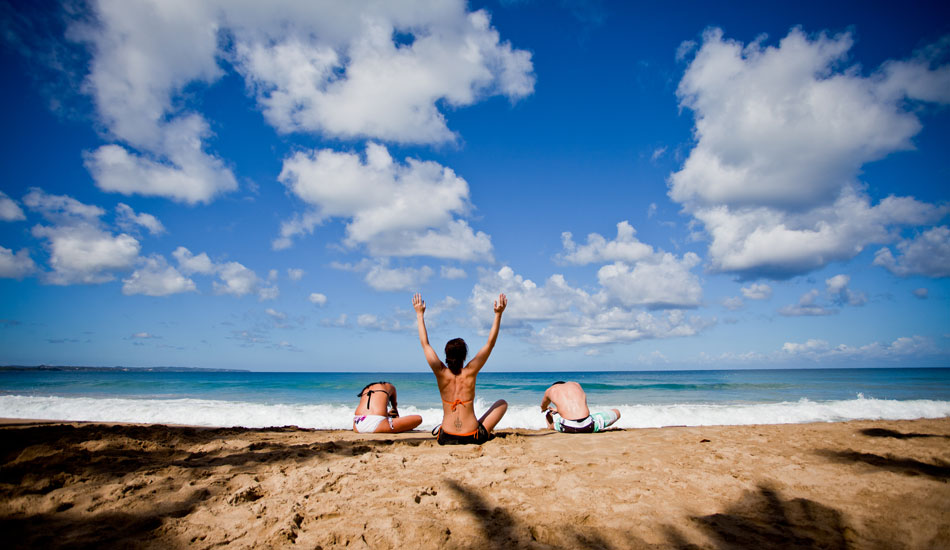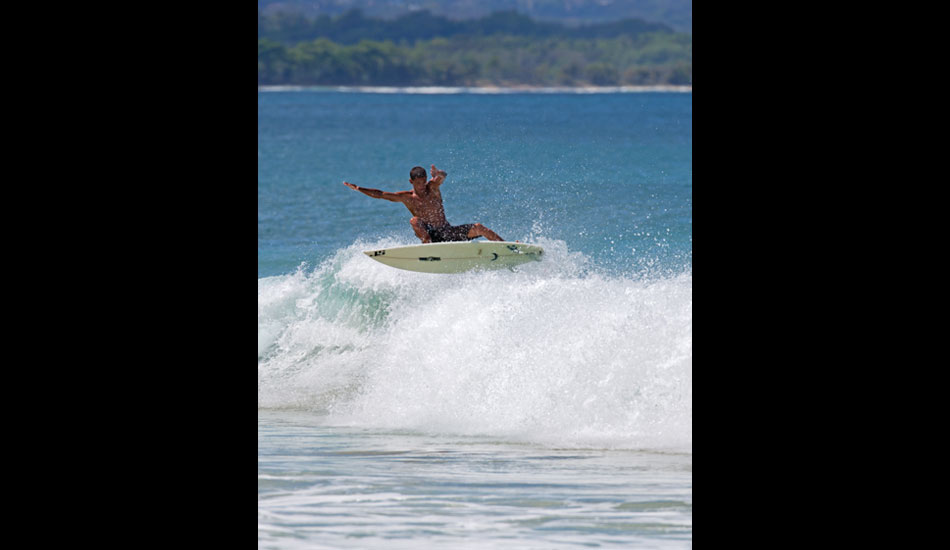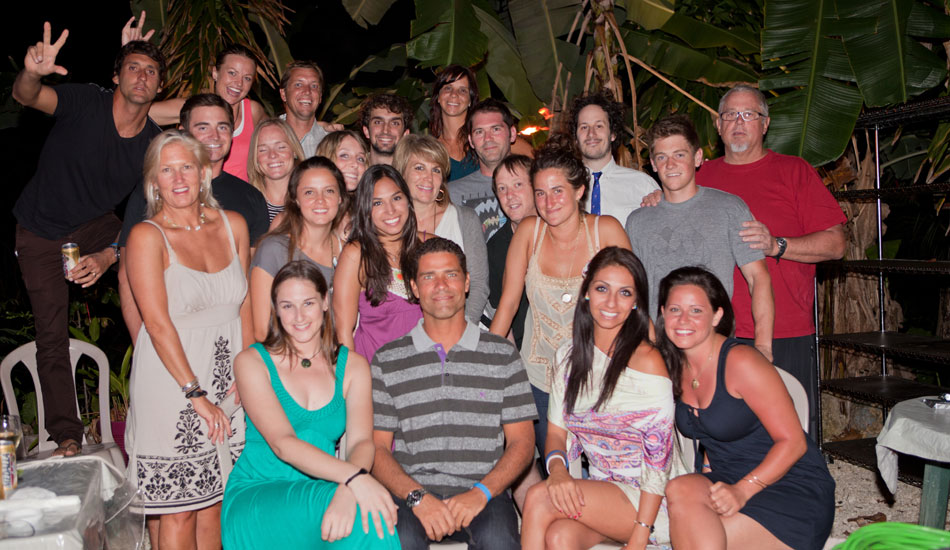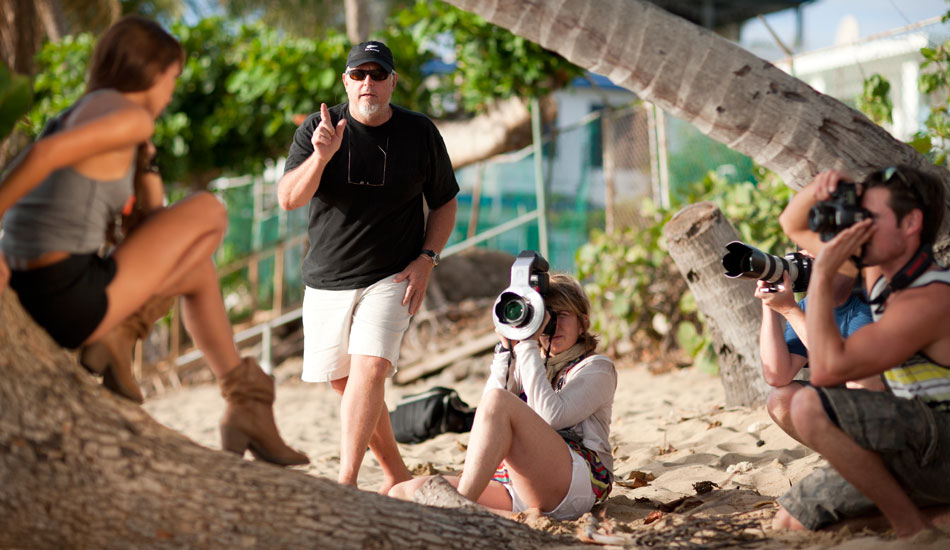
"We wanted to share knowledge – something surf photographers don’t normally do," says Art Brewer, pictured directing a shoot at his workshop in Puerto Rico. "I consider myself an open book to any student who wants to read me."
The idea of teaching a photography workshop first occurred to me when Malcolm Lightner, the Director of Operations, BFA Photography Department at the School of Visual Arts (SVA) in New York, called me about two years ago out of the blue. We had met a few years earlier in New York City at a lecture I was giving for the New York Camera Club. When he called, he re-introduced himself to me and asked if I’d be interested in creating an accredited Action Surf Photography workshop with the Arts Abroad Program at SVA. I told him that I’d need some time to think about it.
I had major doubts about initiating a photography class – especially considering I had never taught and I barely finished high school. When I finally graduated, I was lucky enough to be hired by SURFER Magazine. The closest I ever came to teaching was in 1973 when I took an Ansel Adams workshop in Yosemite National Park with Ansel, Jerry Ulsesman, Wynn Bullick, Jack Welpot and Judy Dater. Fortunately, I made a good impression on them and was asked back to the next workshop to work as an indentured assistant. Both of those workshops were unforgettably inspiring; they filled my head with hope, knowledge, and ability. Over the next 40 years, I worked on and off for SURFER as a staff and a retainer photographer.
So after two weeks of contemplating Malcolm’s offer about setting up a workshop of my own, I called him back and said, “Yes, I’m in!”
The next step was figuring out what aspects of photography to cover, where the best environment to teach would be, and lastly, how the course would be structured. To our knowledge, no one had ever taught an action surf photography workshop before, so we were breaking new ground.
We wanted every student to experience taking photos in and out of the water. We also wanted our new photographers to learn about etiquette. Everyone needs to learn how to handle any situation, whether it involves your equipment or a fellow photographer. Also, you can’t really explain the feeling of swimming around in big surf with an 8-pound piece of camera equipment; It’s something you just have to experience for yourself. I wanted to share some of that practical knowledge that took me years to learn.
Another concern was equipment. Providing gear for water and land photography for over a dozen students was a feat in itself. Thanks to a very loyal and helpful Canon CPS program, K&M Rentals, and two different water-housing companies (SPL and Essex), we were supplied with enough surf photography equipment to bring anyone to their knees. Pelican products also donated some cases to ensure a safe arrival of all of our fabulous toys. Lastly, Delkin Devices chipped in with some of their fastest and most water resistant memory cards. We had everything that we could ever need.
Next, we needed to establish a team. Malcolm, the director, executed logistics. Otto Flores, a local pro surfer and producer, navigated the crew around, providing us with some great waves and photo ops. Ramse Morales, another local, was brought in by Otto. He knows the area and the local people really well and was a key ingredient in coordinating our travels. JP Van Swae, assistant photo editor for SURFER Magazine, has the invaluable triple threat: magazine, surfing, and photography knowledge. Lastly, my assistant Joanna Miriam rounded out the group. She held the seams together and was a great asset when it came to teaching computer tutorials.
Now that we had a team and location in place, the next task was to design a compelling curriculum. We wanted to share knowledge – something surf photographers don’t normally do. I consider myself an open book to any student who wants to read me. There is nothing that I hold back. I feel that photographers who hoard their knowledge only know how to do one thing well, and they’re scared to death that an up and comer might be able to improve upon it. The rewards of teaching far outweigh the fear that someone will duplicate your style. Photography is all about creating something unique and being able to replicate it in any situation. The smiles and new friendships that you receive are priceless. After every workshop, I leave inspired with a new outlook on what is possible.
In the future, my team and I plan to extend these workshops to all levels of photographers. We are planning a mid-level workshop in Nicaragua in June and we plan to venture to new destinations like Bali and South America. As the workshops evolve, so will the students. Our goal is to take inspired photographers and place them in the right situation with the right gear and the right surfers – where success is inevitable. We expect each student to capture the essence of the land and tell a story from start to finish. They need to see beyond the tunnel vision of the perfect wave and capture the camaraderie of surfers’ connection to the tribe.
Learn more about the School of Visual Arts Action Surf Photography Program as the program heads to Nicaragua in June. View more work by Art Brewer and JP Van Swae.

